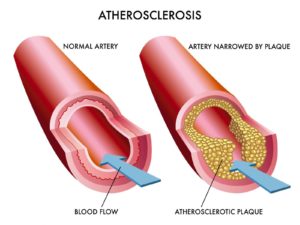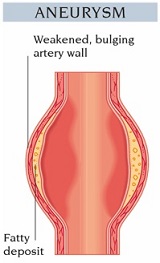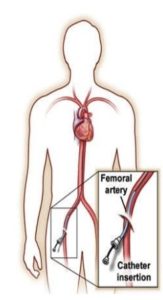Angiogram
As known as Catheter Angiography, Arteriography and Venography.
What is Angiography?
Doctors use angiography to diagnose and treat blood vessel diseases and conditions. Angiography examinations produce x-ray images of blood vessels throughout the body.
- An Arteriogram looks at arteries
- A Venogram looks at veins.
The x-ray images are created by injecting a liquid x-ray dye (an iodine based contrast media), through a thin flexible tube (catheter), into the desired blood vessel from the access point. The access point is usually via an artery in the groin, or the wrist for most procedures. The x-ray contrast media makes the blood flowing in the vessels visible on the x-ray monitor. The contrast media will be eliminated from your body in your urine, via the kidneys.
The use of a catheter makes it possible to combine diagnosis and treatment in a single procedure. Catheter angiography produces very detailed, clear and accurate pictures of the blood vessels and may eliminate the need for surgery.
It is a gold standard method of determining if a vessel has any narrowing/ blockage or ballooning in the walls of the artery or vein.

What are some common uses of the procedure?
Doctors use the procedure to:
- Identify abnormalities, such as enlargements of the arteries, called Aneurysms;
- Identify narrowing’s of arteries due to hardening of the arteries or Atherosclerosis. This is a build-up of cholesterol and other fatty deposits, called Plaques, on the artery walls;
- Guide interventional radiologists and surgeons making repairs to diseased blood vessels, such as implanting stents or evaluating a stent after implantation;
- Detect injury to one or more arteries in the neck, chest, abdomen, pelvis or limbs after trauma;
- Evaluate arteries feeding a tumour prior to surgery or other procedures such as chemoembolization or selective internal radiation therapy;
- Identify dissection or splitting of an artery.


Catheter angiography is used to examine blood vessels in key areas of the body, including:
- Coronary artery disease, a narrowing of the arteries that carry blood and oxygen to the heart muscle;
- Peripheral artery disease (PAD), a narrowing of the arteries in the legs or the arms;
- Carotid artery stenosis, a narrowing of the neck arteries supplying blood to the brain;
- Narrowing or blockage in the veins or arteries in the chest, abdomen, pelvis, arms or legs;
- Renal vascular hypertension, high blood pressure caused by a narrowing of the arteries to the kidneys. Angioplasty and stenting may be used to help improve kidney function;
- Narrowing in haemodialysis fistula or grafts. Fistulas and grafts are artificial blood vessel connections doctors use in kidney dialysis. Angioplasty, (opening / widening a vessel with a special balloon tipped catheter), is generally used when these connections become narrowed or blocked. Stenting may also be needed in some cases.
How should I prepare for the procedure?
- Please have your blood tests done at least a day prior to the procedure.
- Eating and drinking: You will be advised on your information sheet when to stop eating and drinking, if this is required.
- Allergies or previous reactions to contrast media (x-ray dye): Please inform the bookings coordinator if you have any allergies and especially if you have had a reaction to contrast media in the past. If necessary you will be sent a prescription for drugs to suppress the reaction.
- Diabetes: Please tell the bookings coordinator when you are contacted that you are a diabetic. Your blood sugar levels will be monitored while you are with us. If necessary a nurse will discuss a plan for your diabetic management.
- Blood Thinners: If you are taking a “blood thinner” other than aspirin (please do not stop your aspirin), please tell the bookings coordinator. It is likely that you will need to stop this medication temporarily for a few days before angiography. These include:
- Warfarin, also called Coumadin or Marevan
- Apixaban, also called Eliquis
- Dabigatran, also called Pradaxa
- Rivaroxaban, also called Xarelto
- Other usual medications: Continue these unless advised otherwise by your specialist. In particular, please continue taking your aspirin. Please bring with you any medication that you are taking. This is important.
- It is important to tell us if you have Obstructive Sleep Apnoea.
- If you use a C-Pap machine: please bring it with you. We will use it if giving you sedation and if staying overnight you will need to have it with you.
- Skin preparation: You do not need to do any skin preparation yourself other than normal hygiene. We will shave your groin and wrist if necessary.
What to remember to bring with you on the day of your appointment:
- Medications: Please bring ALL your current daily medications with you, (including any over the counter medications). If you are a diabetic please bring your insulin and diabetes test kit.
- Walking aids.
- CPAP machine – this may be used during your procedure.
- Hearing aids.
- Toiletries and overnight sleep attire incase you are required to stay overnight post procedure.
What does the equipment look like?
The procedure is conducted in our “Cath Lab”, which is a theatre with a specialised x-ray machine. The equipment used for this examination consists of an x-ray table, a specialised x-ray machine in a C-shape and a television-like monitor that is located in the examination room. Fluoroscopy, a process which converts x-rays into ‘live’ images, is used to watch and guide the progress of the procedure.
A sheath, which is a plastic tube, is placed in the access artery, such as the femoral artery in the groin, or the radial artery in the wrist. All other equipment used is inserted via this sheath.
The catheter used in angiography is a long plastic tube about as thick as a strand of spaghetti or smaller.
A guide wire is a thin wire used to guide the placement of the catheter and other equipment.
A balloon catheter is a long, thin plastic tube with a tiny balloon at its tip. During an angioplasty the balloon is inflated for a short period of time to widen a narrow section in an artery. It is then deflated and removed. Balloons come in different sizes to match the size of the diseased artery being treated.
Stents are specially designed mesh, metal tubes, that are positioned across a narrowed artery section, in an unexpanded state on a catheter. They are then expanded by inflating the balloon at the tip of the catheter they are mounted on, inside the vessel to hold the vessel walls open. Like balloons, they come in a range of sizes.
Other equipment that will be used during the procedure include an intravenous line (IV) in a vein in your arm, and devices to monitor your heart beat and blood pressure. An Ultrasound machine may be used by the doctor to locate an appropriate part of an artery or vein for access and to insert the sheath.
How is an Angiogram performed?
This examination is usually performed on an outpatient basis. Most times you will be awake during the procedure, but may be lightly sedated.
In the day stay area, as part of the admission process, you will change into a hospital gown. One of our nurses will explain the procedure to you and answer any questions you may have. They will insert an IV line into a small vein in your hand or arm, and the area of the groin or wrist, where the sheath and catheter will be inserted, is shaved. Prior to going to the procedure room it is a good idea to empty your bladder.
In the procedure room or “Cath Lab”, you will be positioned on the x-ray table. You will be connected to monitor’s that track your blood pressure, blood oxygen level and pulse rate.
A small dose of sedative may be given through the IV line to lessen your anxiety during the procedure and to help you relax.
The area of your body where the catheter is to be inserted will be cleaned and covered with a sterile surgical drape. The doctor will numb the area with local anaesthetic. This will briefly burn and / or sting before the area goes numb. A very small incision or nick, is made at the site. A needle is put into your artery, or vein, and a wire is inserted into the artery via the needle. The needle is then removed and the sheath is inserted over the wire into the artery. A catheter is passed via the sheath, over a wire up to into the artery system that is to be examined. You may feel pressure when the catheter or sheath is inserted into the artery, however, you will not feel any great discomfort.
Using “live” x-rays, known as Fluoroscopy, the doctor guides the catheter through the blood vessels until it reaches the area to be examined. Once the catheter is in place, contrast media will be injected into the artery and a series of x-ray images taken to perform an angiogram. As the contrast media passes through your body, you may feel a warm flush sensation. This will pass quickly.
The images are shown on a “live” television screen, that the doctor reviews immediately. The doctor will replay and study the recorded images for any sign of disease or narrowing and will decide whether any treatment is required. They will discuss this with you and proceed to angioplasty and/or stenting if necessary.
What happens after the procedure?
- When the procedure is finished you will be moved onto your own bed and taken to the Day Stay ward.
- The catheter or sheath is removed from the artery and pressure applied.
- If the procedure is done through your wrist, a small pad will be placed over the needle site and inflated to prevent bleeding.
- Your specialist will discuss their findings with you while you are in hospital.
- After the procedures, patients are usually discharged on the same day but under some circumstances, a patient may need to stay overnight.
- If you have treatment of a narrowing with percutaneous coronary intervention (PCI or stenting) you will be required to stay overnight.
- You need to either stay in our facility overnight or to have a responsible adult stay with you overnight in other accommodation. We advise that you do not drive for 24 hours. If your angiogram proceeds to angioplasty you may not drive for 48 hours. This is an LTSA legal requirement. You cannot go home alone in a taxi.
- Your specialist will advise you when you can return to work.
What are the benefits vs the risks?
As with all medical procedures, there are risks and benefits, these will be discussed with you by your doctor. The majority of patients having this procedure experience no problems or complications.
Benefits
- Angiography may eliminate the need for surgery. If surgery remains necessary, it can be performed more accurately.
- Catheter angiography presents a very detailed, clear and accurate picture of the blood vessels.
- By selecting the arteries through which the catheter passes, it is possible to access vessels in several specific body sites.
- Use of a catheter makes it possible to combine diagnosis and treatment in a single procedure.
- These procedures are performed using local anaesthesia. Because a general anaesthetic is not required in most patients, there is no extended stay in hospital.
- No surgical incision is necessary – only a small nick in the skin, which does not need stitches.
- You will be able to return to your normal activities shortly afterwards.
Risks
The majority of patients having this procedure experience no problems or complications. All invasive procedures can have complications. while the risk of an angiogram is low it is not zero.
Minor complication include:
- Bleeding under the skin at the wound site – this should improve over a few days, but contact your GP if you have any concerns.
- Bruising at the wound site – it is common to have a bruise for a few weeks.
- Allergy to the contrast media used. This causes symptoms such as a rash. You should discuss any allergies that you have with your specialist before the procedure. This reaction can occur up to 10 days your procedure. Please advise MCVS if you experience any type of rash. It is important that you seek medical attention. Your GP may wish to contact us.
More serious complications are rare, but may include:
- Damage to the artery in the arm or the leg from the catheter. This could affect the blood supply to that limb.
- Heart Attack
- Stroke
- Kidney damage caused by the contrast media
- Skin / tissue damage caused by radiation, if the procedure is a complex and long one.
- Serious bleeding
It is important that you discuss any concerns you have with your specialist and with the nurse during your admission. Our team can give you more information about your level of risk and information about your individual circumstances.

